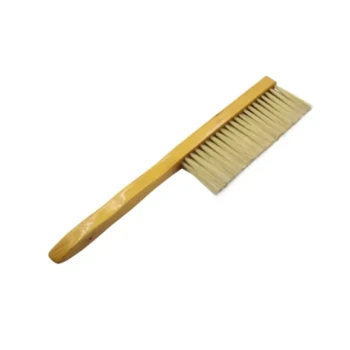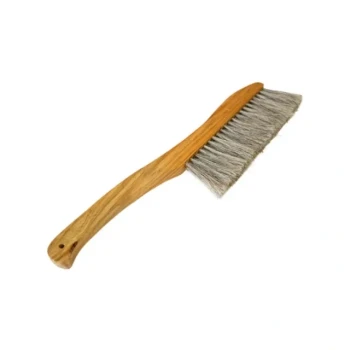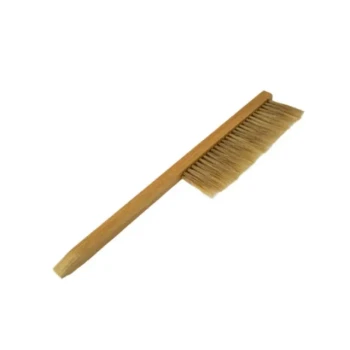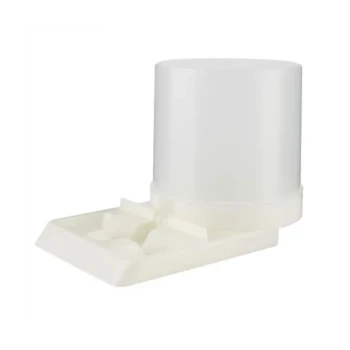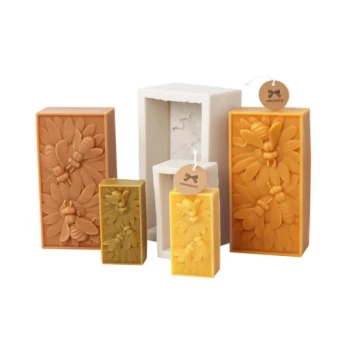In beekeeping, a bee brush is a specialized tool designed to gently sweep bees off a surface without harming them. It is most commonly used to clear bees from frames of honeycomb before they are removed from the hive for honey extraction, but it also serves a purpose during hive inspections and swarm management.
The core function of a bee brush is to provide precise control for moving bees from a specific area. However, bees perceive brushing as an attack, so this tool must be used sparingly and with a gentle touch to avoid provoking a defensive reaction from the colony.

The Primary Role of a Bee Brush
A bee brush allows a beekeeper to carefully control the movement of bees. While other methods like a sharp shake can dislodge most bees from a frame, a brush is needed for more delicate or complete removal.
Gently Clearing Bees from Frames
The main purpose of the brush is to clear the remaining bees from a frame of honey. This ensures that very few bees are accidentally transported away from the hive during a honey harvest.
Specific Scenarios for Use
A brush is particularly useful in several key situations. These include honey harvests, where frames must be completely free of bees, and the repair of broken comb, where bees must be moved from a specific area to allow for work. It can also be used to move the last few bees when capturing a swarm.
Understanding the Critical Drawbacks
While useful, a bee brush is often a tool of last resort. Understanding why is critical to maintaining a calm and healthy hive.
Why Bees Dislike the Brush
Bees react aggressively to being brushed. They often interpret the bristles as a threat from a predator, like a bear attempting to rob the hive.
This perceived attack can trigger a defensive response, causing the bees to aggressively sting the brush and release alarm pheromones, which can agitate the entire colony.
The Importance of Sparing Use
Because brushing agitates the colony, it should only be used when necessary. For routine inspections, a puff of smoke or a gentle shake is often a better first choice for clearing bees. The brush should be reserved for situations where those methods are insufficient.
Best Practices for Brush Selection and Use
Choosing the right brush and using it correctly can significantly minimize the stress on your bees.
The Advantage of Natural Horsehair
A brush made from natural horsehair is considered the superior choice. This material prevents the buildup of static electricity, which can be irritating and harmful to bees.
Natural bristles also tend to collect less sticky honey and propolis compared to synthetic alternatives, making them gentler and easier to keep clean.
The Proper Technique
The key to using a bee brush is a slow and gentle sweeping motion. The goal is to encourage the bees to walk off the comb, not to forcibly push them. Use light, deliberate strokes to guide them toward the hive entrance or the top of the frames.
How to Apply This to Your Hive
Your decision to use a bee brush should be based entirely on the specific task at hand.
- If your primary focus is a honey harvest: Use a shake to remove the majority of bees, then use the brush sparingly to clear any that remain on the frame.
- If your primary focus is a routine inspection: Avoid the brush if possible and rely on a smoker and a hive tool to manage the bees.
- If your primary focus is swarm removal or comb repair: The brush is an excellent tool for gently moving the last cluster of bees from a precise spot.
Ultimately, mastering the bee brush is about knowing when not to use it as much as knowing how to use it correctly.
Summary Table:
| Aspect | Key Insight |
|---|---|
| Primary Use | Gently clearing bees from honey frames and during comb repair. |
| Key Drawback | Can agitate bees; should be a tool of last resort. |
| Best Material | Natural horsehair bristles to prevent static and irritation. |
| Optimal Technique | Slow, gentle sweeping motions to encourage bees to walk away. |
Equip your apiary with the right tools for success. For commercial beekeepers and distributors, using high-quality, gentle equipment is key to maintaining productive and healthy colonies. HONESTBEE supplies durable, professional-grade beekeeping supplies and equipment—including gentle bee brushes—designed for the demands of commercial apiaries and wholesale operations.
Contact our expert team today to discuss your wholesale needs and discover how our reliable equipment can support the health of your bees and the efficiency of your business.
Visual Guide
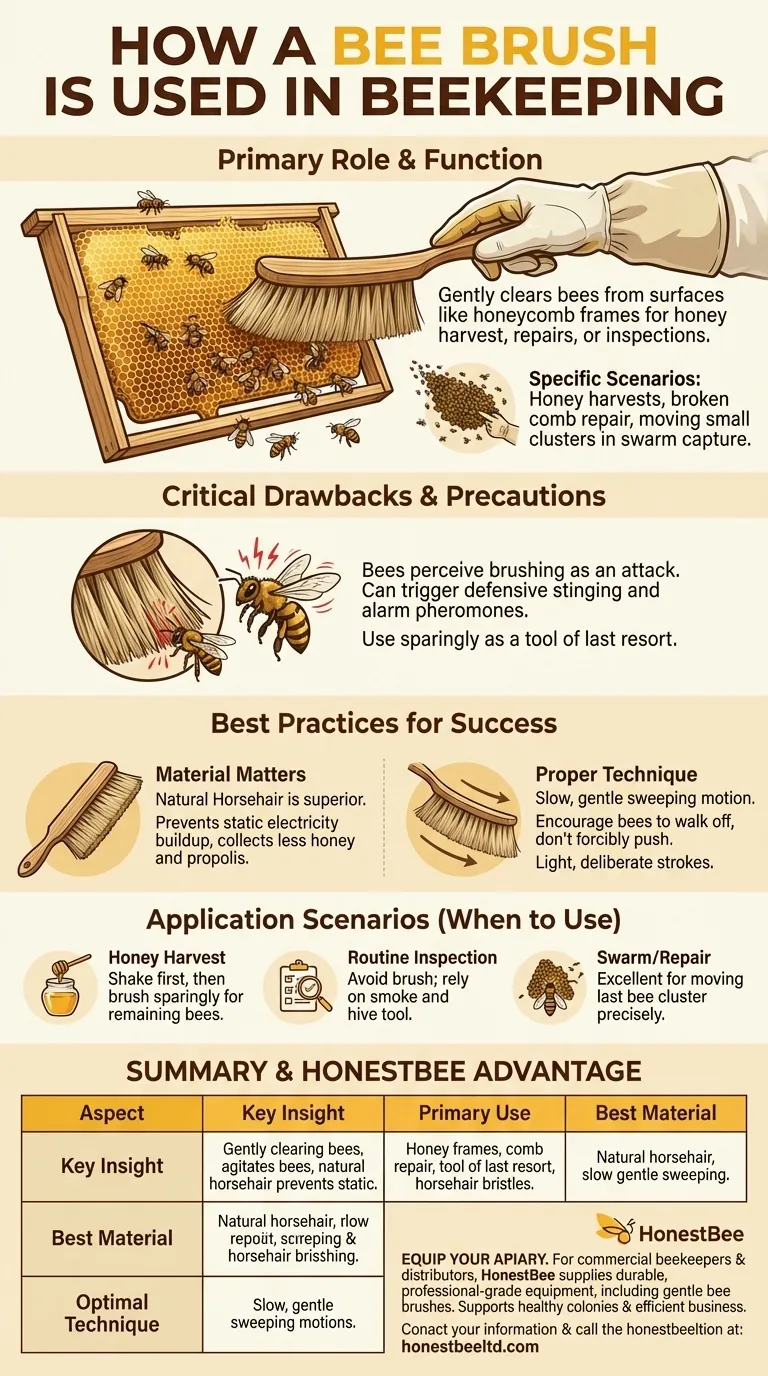
Related Products
- Wooden Bee Brush with Double-Row Horsehair Bristles
- Plastic Handle Single Row Artificial Fiber Bee Brush
- Wooden Bee Brush with Triple Row Artificial Fiber for Beekeeping
- Premium Triple-Row Horsehair Bee Brush
- Double Row Artificial Fiber Bee Brush for Beekeeping
People Also Ask
- What should be done if the swarm is situated on the bottom of a tree limb? A Guide to Methodical Bee Capture
- What is a bee brush used for? Gently Sweep Bees from Honeycomb Frames
- What is the function of a bee brush in beekeeping? Master Gentle Bee Handling for Hive Success
- What is a bee brush and how is it used in beekeeping? A Guide to Gentle Bee Handling
- How effective are brushes as a smoke alternative in beehives? Avoid Agitating Your Hive


